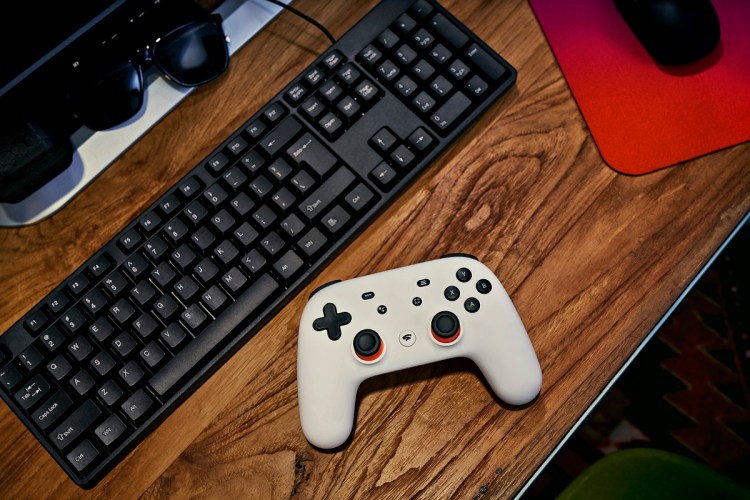testsetset
Google’s Stadia cloud gaming service works (here’s our review), enabling me to play games in a data center and have them streamed to my own screens. But it’s just OK. And that’s a disappointment. I expected it to be more revolutionary than it is.
I played a number of the launch games to see how it performed. I lost myself in Shadow of the Tomb Raider, Destiny 2: Shadowkeep, Mortal Kombat 11, and a new title called Gylt.
That’s a good thing. I forgot that I was playing on a cloud-gaming service, and I had to pay close attention to whether there were any serious lag problems or other artifacts. There weren’t. I played it on my home Wi-Fi network, which was connected to my Comcast cable modem, which can get 369 megabits per second bandwidth downstream and 21 megabits per second upstream.
If I play it daily for a long time, Comcast may tell me that I’m blowing through my data cap. But I don’t think that will happen, though one analyst group thinks that could happen to 6 million gamers. I didn’t really worry so much about whether these particular games were going to bog down on Stadia, which you play with a Stadia Controller connected via Wi-Fi to a Chromecast Ultra device attached to a TV — or connected via cable to a Google Pixel 3 smartphone.
June 5th: The AI Audit in NYC
Join us next week in NYC to engage with top executive leaders, delving into strategies for auditing AI models to ensure fairness, optimal performance, and ethical compliance across diverse organizations. Secure your attendance for this exclusive invite-only event.
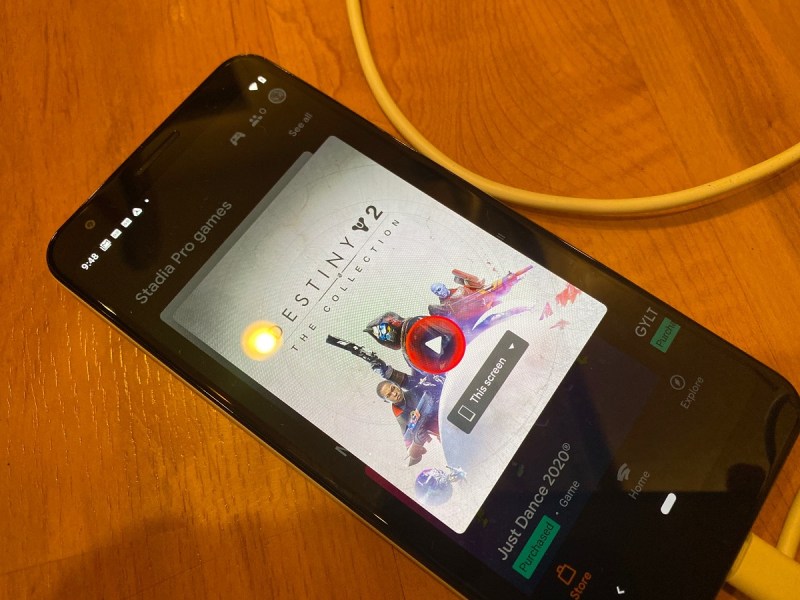
Above: You have to plug a cable in to connect a Stadia controller to a Pixel smartphone.
But I experienced a big letdown here. Back in March, when Google first unveiled its plans for Stadia at the Game Developers Conference, I wrote that this was long overdue. I said back then that I was fond of dividing the world of the game industry into the intentional game companies — Sony, Microsoft, and Nintendo — and the accidental game companies Amazon, Google, Apple, and Facebook. By accidental, I mean that they created platforms that were meant for something else, but games eventually took them over. The iPhone is a perfect example of that.
The Stadia announcement — with the likes of Google CEO Sundar Pichai, Google vice president Phil Harrison, and Stadia games executive Jade Raymond at the helm — was a real sign that Google was waking up and becoming intentional about games. Harrison said so. But during the intervening months, Google backed off on a lot of its promises. But this reminds me about Peter Moore’s comments about the Dreamcast launch. “They keep moving the goal posts back on us,” he said.
Google itself set some of these goals, and I would like to move the goal posts back even further. Before they launched, they should have had all of this sewn up. Now we see that the features needed are going to trickle out. Here are some of the humble requests we have for what Stadia needs to do. And they should be in a hurry. I don’t want to see this happen over the next year. I want to see this happen so it becomes a minimum viable product.
Bring the games back
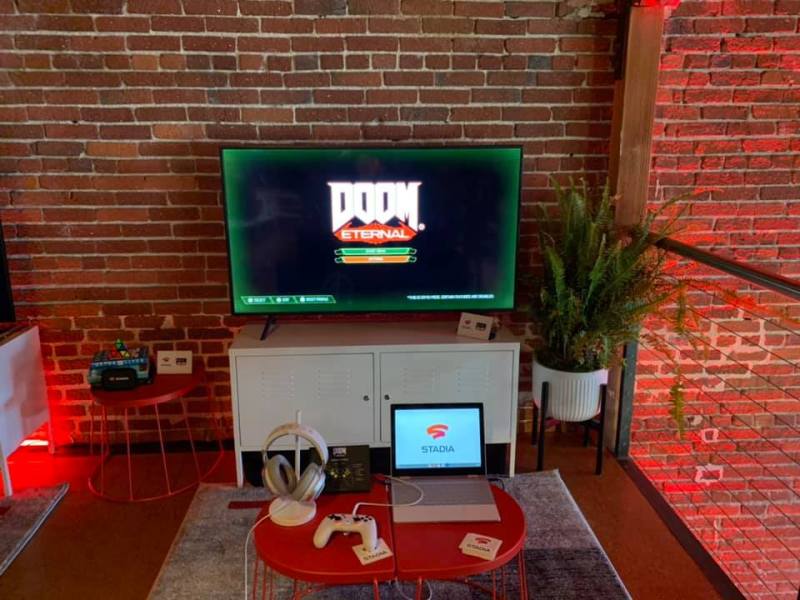
Above: Google Stadia runs games like Doom Eternal. But not yet.
By June, Google said it had confirmed 31 games for Stadia. But Google announced last week that it would have just 12 games at launch. It would have 14 more by year end. Then, last night, Google made a surprise announcement that Stadia would have 22 games at launch. That’s much better, but it doesn’t exactly build confidence that they came down to the wire in such a way.
Ubisoft is launching its own Uplay service, but those games won’t be available on Stadia until 2020, and you’ll have to pay for the Uplay subscription on top of whatever Google is going to charge.
Raymond started working at Google this year. But that was way too late to get a lot of games ready for lunch. First-party games from Google could turn out to be a long way off. That’s a crime for anyone launching a console. Or in this case, launching a controller.
By comparison, look at all of the 100-plus games that are available on Apple Arcade already, less than two months after its launch. Microsoft, which began testing its Project xCloud game-streaming service in October, and Microsoft is adding 50 more new games for people to try. Google now says it has 40 games coming, but it’s not clear by when.
Get a better deal for gamers
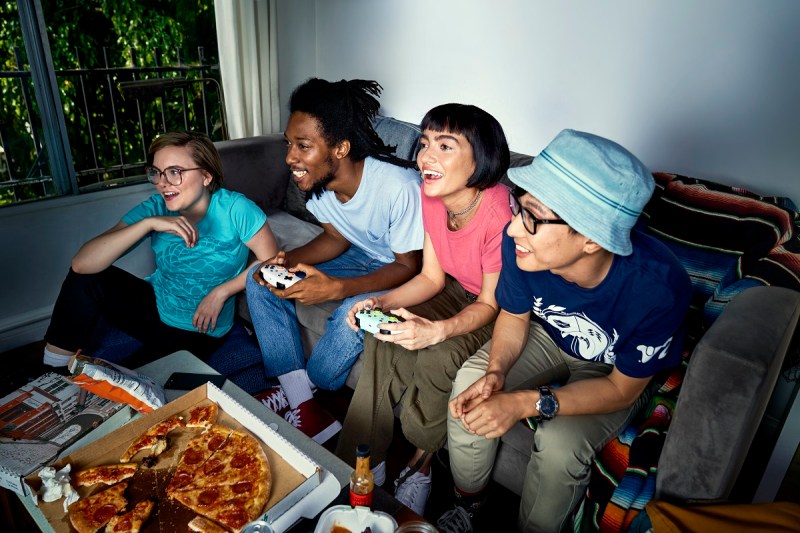
Above: Fun for all your friends?
So consumers are paying $130 for a controller, a Chromecast Ultra, and three months of free service. And then they pay $10 a month for service after the first three months. And then consumers have to buy games at regular price, or about $60 each. They get to play Destiny 2: Shadowkeep. But where’s the bargain here? By 2020, Google promises a less-expensive tier, where you don’t have to buy hardware or a subscription, and you just pay for the games. But that’s not very motivating, particularly when Microsoft is poised to just add xCloud to its GamePass subscription.
Get rid of the mobile cable
In July, Google let everyone know that you’ll have to plug a USB-C cable into the wireless controller in order to connect it with PCs and smartphones. I did so, and it worked OK on the phone. But I could barely read the tiny text for games on the phone screen. That’s kind of a bad experience. And if you’ve got an older laptop, it probably doesn’t have a USB-C plug. Google also announced that Stadia won’t stream 4K or HDR to Google PCs.
Play Stadia on other smartphones
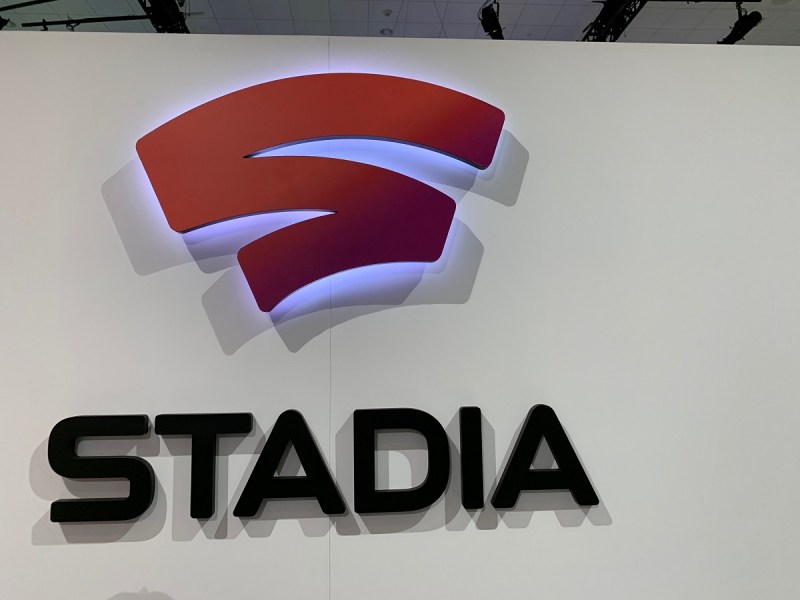
Above: Stadia is the plural of stadium, in case you were wondering.
Right now, I’m playing Stadia on a Google Pixel smartphone. I can’t play it on an iPhone, which is my smartphone of choice. I don’t know what’s holding up the ability to play on a wider range of devices, but it’s kind of annoying that this limitation is in place.
Get some real hits
Umm. Where’s Fortnite? Where’s Apex Legends? Where’s …you see what I mean? This is not a service that will entertain you while you are bored and need to play games on the bus. Apple Arcade is a perfectly viable product for that. This was supposed to have a rich set of games that you are dying to play, in any location where you can find a screen.
Add multiplayer
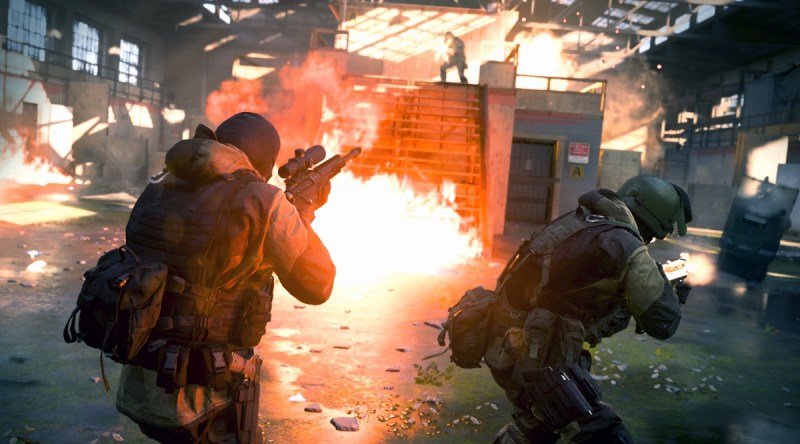
Above: Gunfight mode in Modern Warfare.
Bungie also said that Destiny 2 on Stadia would be a closed ecosystem. That means it won’t have cross-platform multiplayer. It’s not a great achievement to stream a single-player game to a solo player. It’s another thing altogether to guarantee great gameplay for players in a multiplayer game.
Get the fastest games
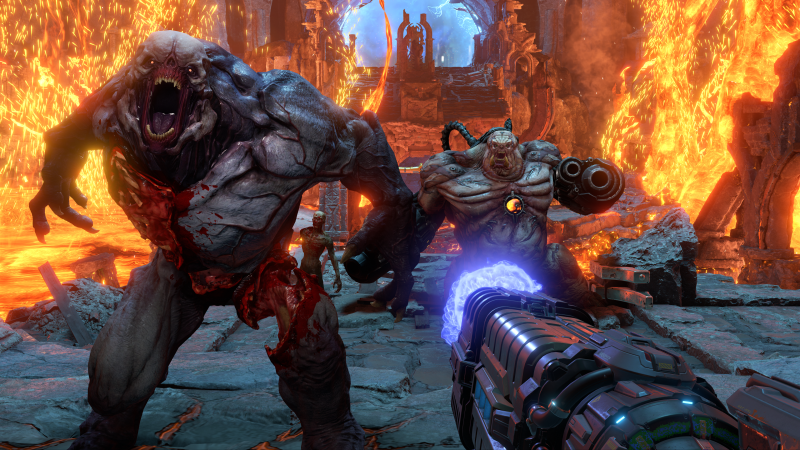
Above: So many guns.
Doom Eternal was shown off at the Stadia press conference as a key title with extreme speeds that could play Stadia well. During E3, I played Doom Eternal for a half hour and noticed lag only a few times. But then id Software announced that Doom Eternal would be delayed until 2020. Poof. There goes one of the fastest games on Stadia.
I would also like to play Call of Duty: Modern Warfare and enjoy crossplay with that title. It’s one of the biggest multiplayer games of the year, with a graphically intense single-player campaign. With Call of Duty, I’ve seen a full-fledged gamer PC choke on the graphics. It’s a fast-paced game, and the last thing you want is lag when you’re about to fire at someone. If Google can show this game off, then it will truly convince the faithless hardcore gamers that cloud gaming has truly arrived and has reached parity with many other ways of playing games.
Add the YouTube features
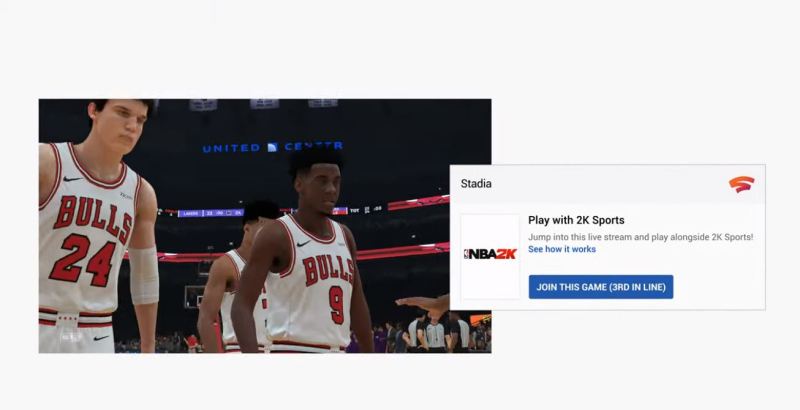
Above: Crowd Play through YouTube and Stadia. Not yet.
Google announced that it would have cool YouTube features such as Stream Connect, State Share, and Crowd Play. But none of this stuff is ready yet. These social sharing features distinguished Google Stadia from other cloud gaming services. But not at the moment.
Get the user interface on the TV
It’s a bit annoying that when I start the Google Stadia service on my iPhone, the user interface does not appear on my Chromecast-connected TV screen. Rather, I have to look down at the phone to tap “play” on a game in order to get it started. Why isn’t Google taking advantage of the big screen? Sure, it saves on bandwidth. But is bandwidth that scarce on Stadia?
Launch in Asia
Yes, Google backed off on a global launch. But it really needs to go global to be viable in the long run. Some of the best bandwidth in the world is in Asia. What’s the hold up?
Conclusion

Above: Stadia controller and Chromecast Ultra. This is your game console.
Google’s biggest mistake was to call this a launch. Founders are going to get to play. But it should have called this early access or a beta test. Perhaps I should be happy that it launched at all, with a little bit of service that shows it works. But again, this is Google. I expect more. I expect to see it bring more resources to the table faster, particularly if it wants to shake off the console makers who are coming out with new consoles in the in next year. Google has a limited window of time to impress gamers. And it hasn’t done so yet.
Peter Moore, former head of Sega of America, once said that they “kept moving the goalposts” back on the Dreamcast launch. When his team nailed one goal, people immediately set up a more difficult goal to reach. That’s the nature of the competitive console business. Google has proven the basics of cloud gaming, but so have a lot of startups like Blade (Shadow), Hatch, xCloud, and others around the globe. I expected so much more from one of the most powerful companies on Earth.
For now, Google doesn’t want Stadia to be enormously successful. If it were so, then it would have too many gamers, and they would all bring the latency up and cause lag across the whole system.
Disclosure: Google provided me with a Pixel smartphone and a Stadia controller for the purpose of this story. Our coverage remains objective.
